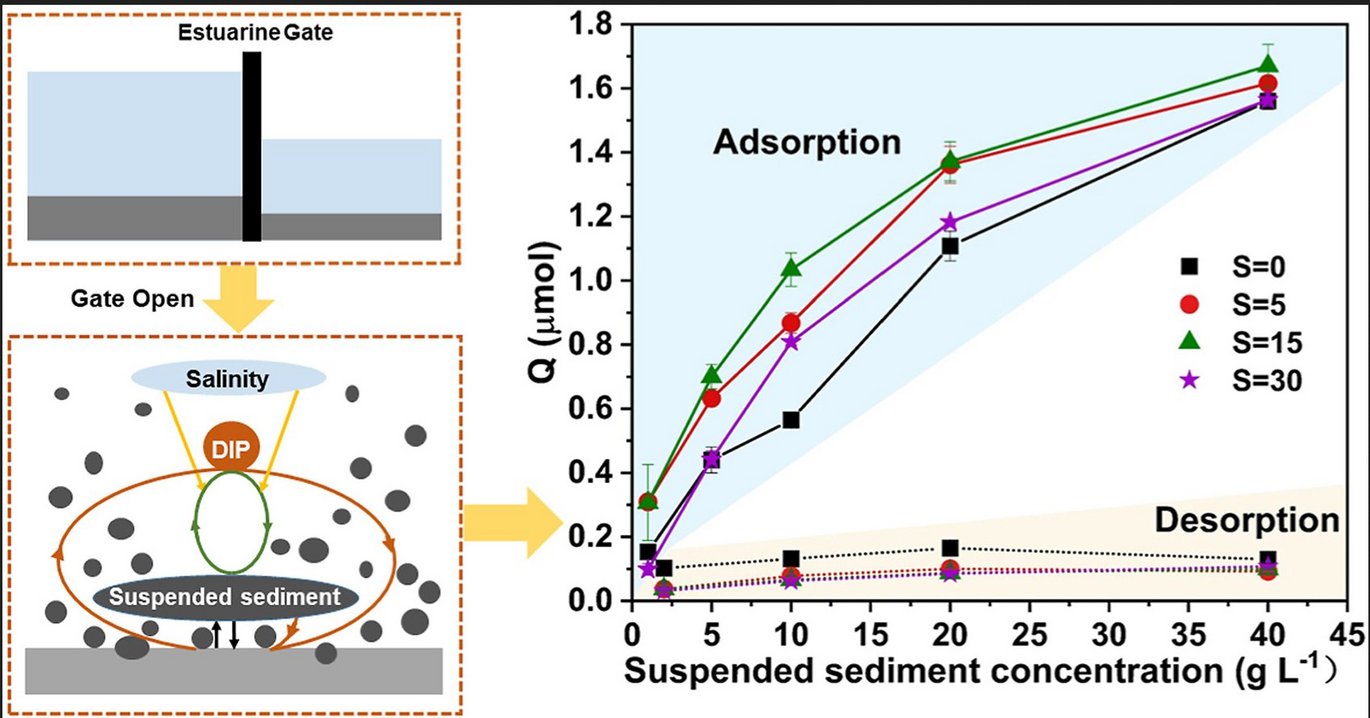Riverine flux of dissolved phosphorus to the coastal sea may be overestimated, especially in estuaries of gated rivers: Implications of phosphorus adsorption/desorption on suspended sediments
New publication by Shiyu Wang, Rolf D. Vogt, Jacob Carstensen et al.

Abstract:
The flux of terrestrial dissolved inorganic phosphorous (DIP, i.e. PO43−) via rivers into coastal seas is usually calculated by simply multiplying its concentration with the corresponding water flow at the river mouth. Subsequent adsorption/desorption of DIP onto suspended sediment and the influence of salinity in the estuary are often overlooked. A series of DIP adsorption/desorption experiments under different salinities (0, 5, 15, 30) and suspended sediment concentrations (1–40 g L−1) were conducted in order to assess the potential influence of these factors on the overall DIP loading to the coastal zone. The effect of different sea-salt ions on DIP adsorption/desorption was also assessed by comparing different experimental solutions (NaCl solution, artificial seawater and real seawater). In estuaries, the adsorption of DIP to suspended sediments was greater than desorption, and the net adsorption increased with increasing concentration of suspended sediments and salinity. This enhanced DIP adsorption onto suspended sediment reduces the riverine discharge of DIP to coastal ecosystems. Disregarding this process, especially for the gated estuaries with high sediment resuspension, potentially leads to an overestimation of the terrestrial DIP input to the coastal region.
